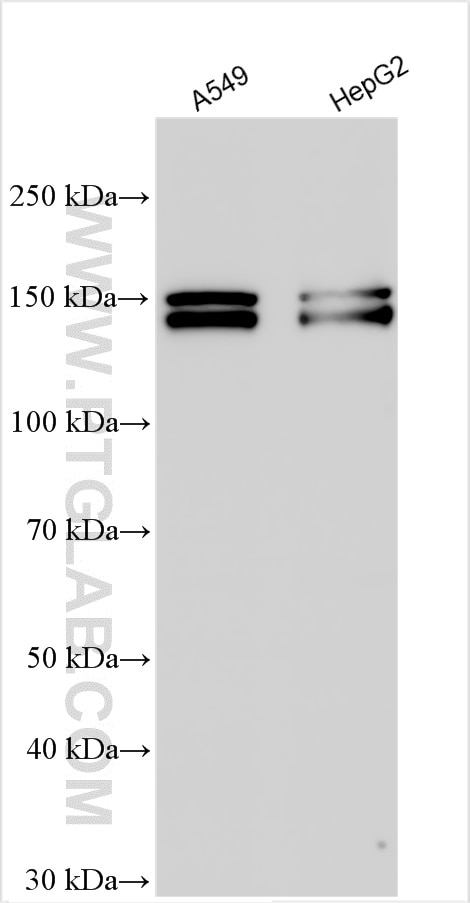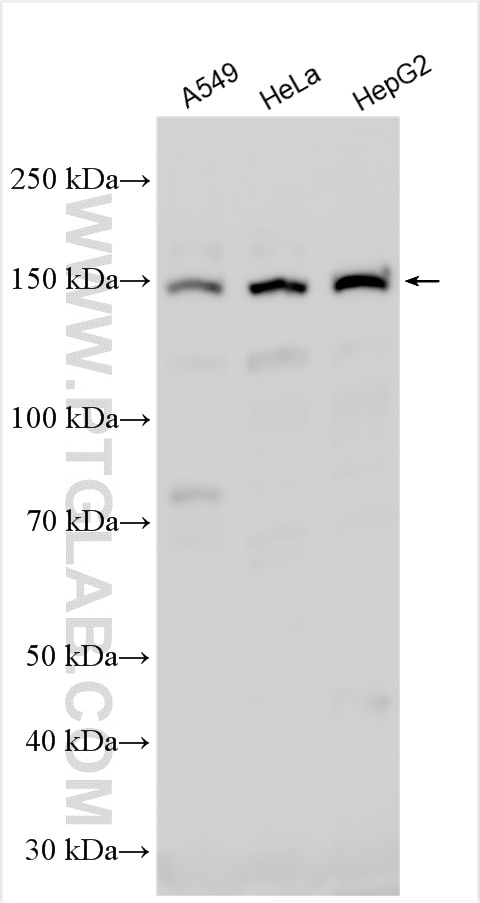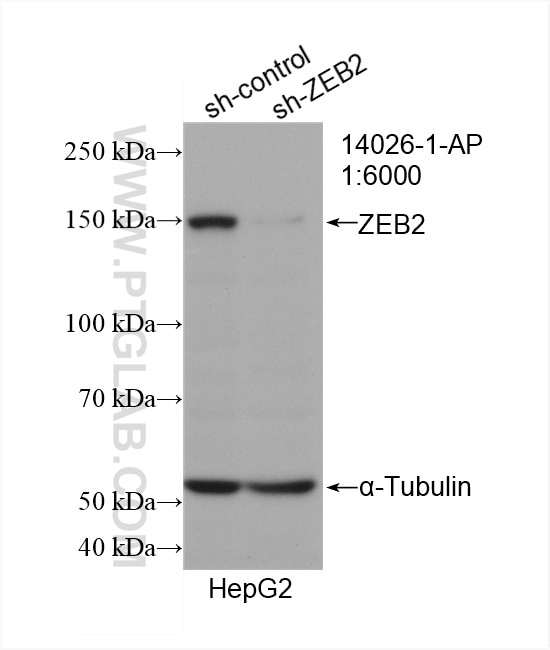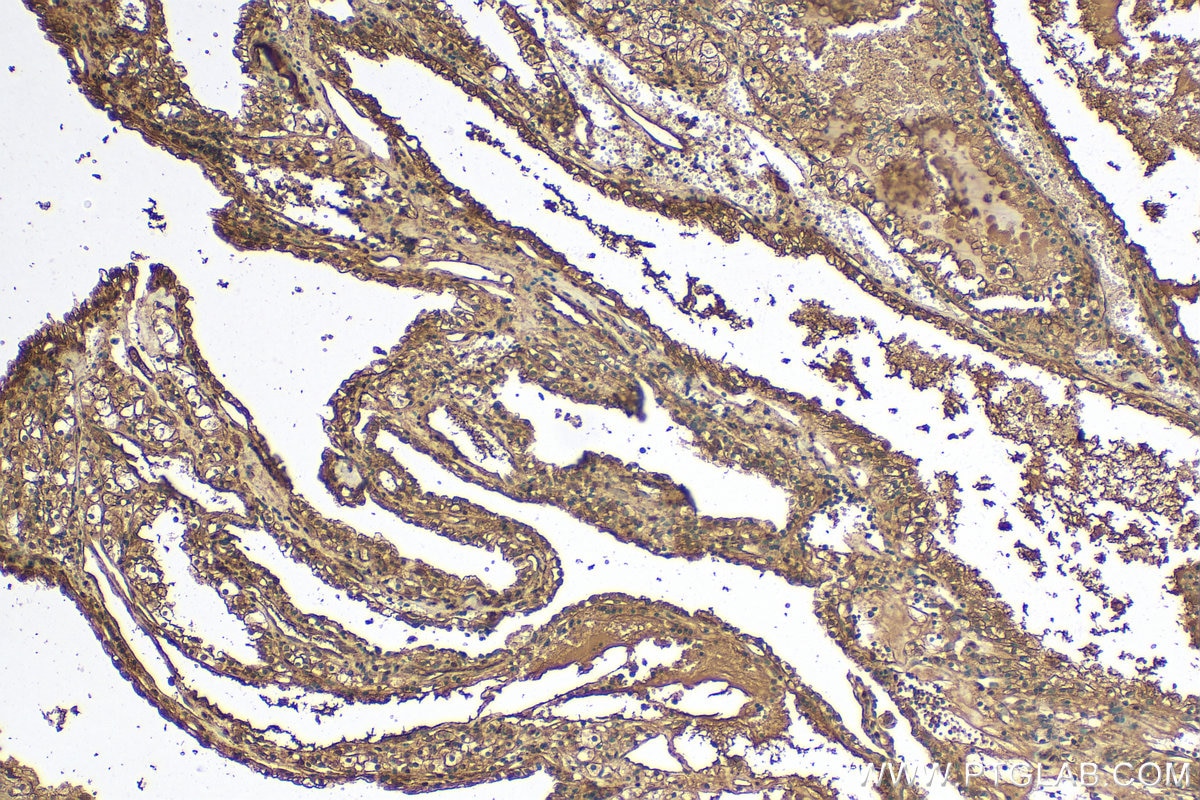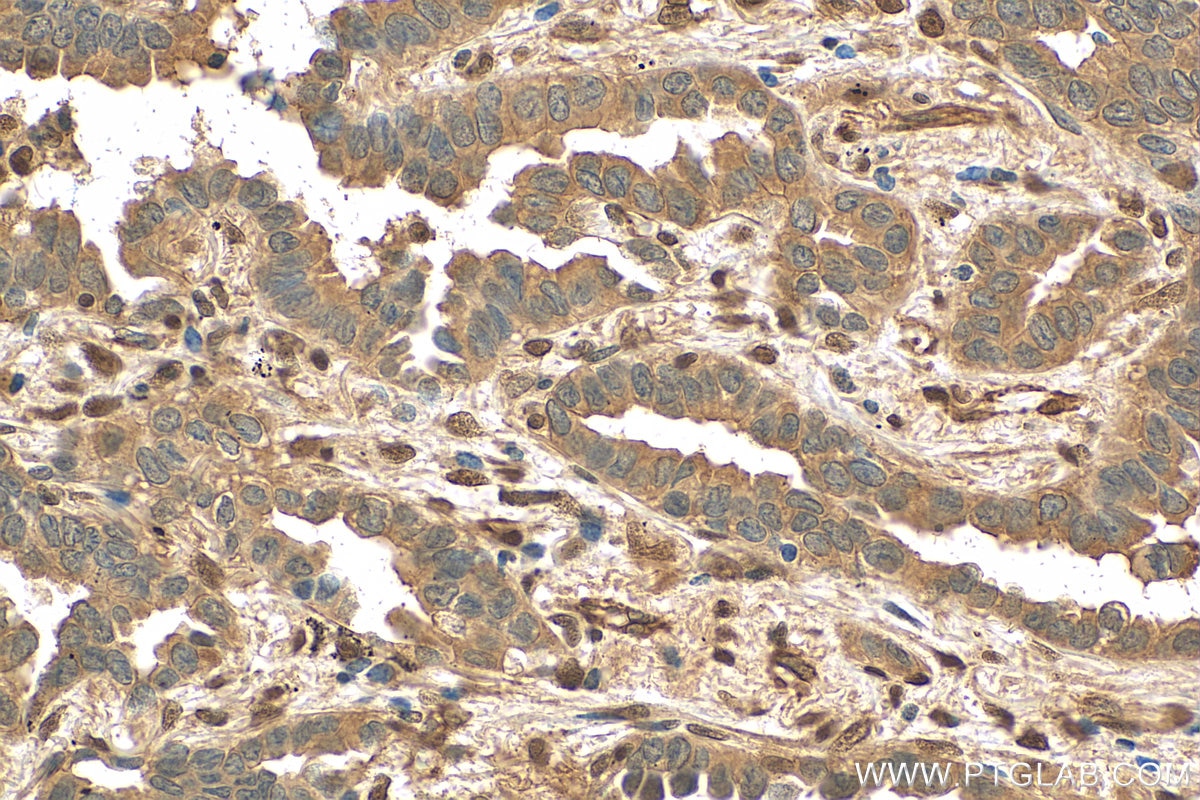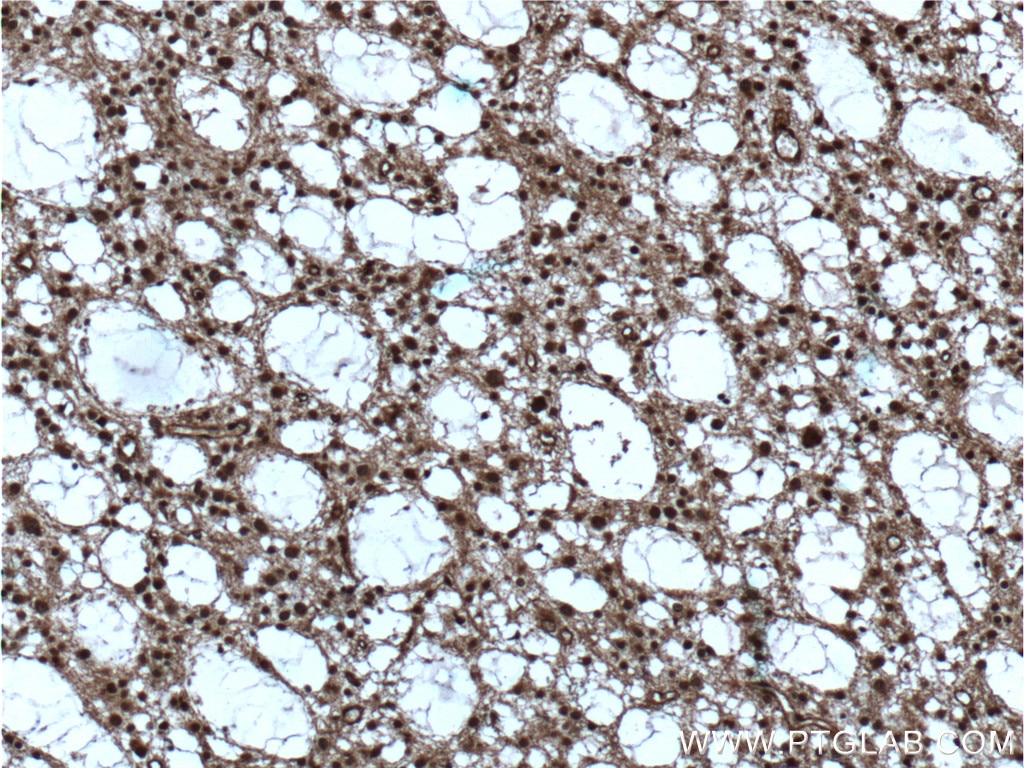- Phare
- Validé par KD/KO
Anticorps Polyclonal de lapin anti-ZEB2
ZEB2 Polyclonal Antibody for WB, IHC, ELISA
Hôte / Isotype
Lapin / IgG
Réactivité testée
Humain et plus (4)
Applications
WB, IHC, IF, CoIP, ChIP, RIP, ELISA
Conjugaison
Non conjugué
N° de cat : 14026-1-AP
Synonymes
Galerie de données de validation
Applications testées
| Résultats positifs en WB | cellules A549, cellules HeLa, cellules HepG2 |
| Résultats positifs en IHC | tissu de gliome humain, tissu de cancer du poumon humain, tissu de carcinome à cellules rénales humain il est suggéré de démasquer l'antigène avec un tampon de TE buffer pH 9.0; (*) À défaut, 'le démasquage de l'antigène peut être 'effectué avec un tampon citrate pH 6,0. |
Dilution recommandée
| Application | Dilution |
|---|---|
| Western Blot (WB) | WB : 1:2000-1:12000 |
| Immunohistochimie (IHC) | IHC : 1:50-1:500 |
| It is recommended that this reagent should be titrated in each testing system to obtain optimal results. | |
| Sample-dependent, check data in validation data gallery | |
Applications publiées
| KD/KO | See 3 publications below |
| WB | See 69 publications below |
| IHC | See 9 publications below |
| IF | See 4 publications below |
| CoIP | See 1 publications below |
| ChIP | See 1 publications below |
| RIP | See 1 publications below |
Informations sur le produit
14026-1-AP cible ZEB2 dans les applications de WB, IHC, IF, CoIP, ChIP, RIP, ELISA et montre une réactivité avec des échantillons Humain
| Réactivité | Humain |
| Réactivité citée | rat, Humain, poisson-zèbre, poulet, souris |
| Hôte / Isotype | Lapin / IgG |
| Clonalité | Polyclonal |
| Type | Anticorps |
| Immunogène | ZEB2 Protéine recombinante Ag5171 |
| Nom complet | zinc finger E-box binding homeobox 2 |
| Masse moléculaire calculée | 136 kDa |
| Poids moléculaire observé | 150-170 kDa |
| Numéro d’acquisition GenBank | BC060819 |
| Symbole du gène | ZEB2 |
| Identification du gène (NCBI) | 9839 |
| Conjugaison | Non conjugué |
| Forme | Liquide |
| Méthode de purification | Purification par affinité contre l'antigène |
| Tampon de stockage | PBS with 0.02% sodium azide and 50% glycerol |
| Conditions de stockage | Stocker à -20°C. Stable pendant un an après l'expédition. L'aliquotage n'est pas nécessaire pour le stockage à -20oC Les 20ul contiennent 0,1% de BSA. |
Informations générales
Zinc finger E-box-binding homeobox (ZEB2) is a key transcription factor that acts as a multifunctional regulator during nervous system development. ZEB2 contains two zinc finger domains and a homeodomain-like sequence and interacts with the TGF-ß superfamily signaling regulators, Smads, to regulate the expression of their downstream genes. ZEB2 is expressed in the developing neural tube, as well as in neural crest cells, the hippocampus and the cerebral cortex. ZEB2 has previously been implicated in EMT, cell-cycle progression, apoptosis and senescence. ZEB2 was overexpressed in bladder, ovarian, stomach, pancreatic and squamous cell carcinoma, in the intestinal subtype of stomach cancers, and at the invasive front of CRC where EMT is most prominen. ZEB2 also mediates cell-fate decision in neuronal, T cells and hematopoietic stem cells. The calculated molecular weight of ZEB2 is 136 kDa, but we find the 95 kDa band in some publication(PMID: 27659015 )
Protocole
| Product Specific Protocols | |
|---|---|
| WB protocol for ZEB2 antibody 14026-1-AP | Download protocol |
| IHC protocol for ZEB2 antibody 14026-1-AP | Download protocol |
| Standard Protocols | |
|---|---|
| Click here to view our Standard Protocols |
Publications
| Species | Application | Title |
|---|---|---|
Theranostics FSH induces EMT in ovarian cancer via ALKBH5-regulated Snail m6A demethylation | ||
Nat Commun Symmetry breaking of tissue mechanics in wound induced hair follicle regeneration of laboratory and spiny mice. | ||
Cancer Lett A novel antagonist of the CCL5/CCR5 axis suppresses the tumor growth and metastasis of triple-negative breast cancer by CCR5-YAP1 regulation | ||
Oncotarget Pygopus-2 promotes invasion and metastasis of hepatic carcinoma cell by decreasing E-cadherin expression. | ||
Cell Death Dis PIM1 mediates epithelial-mesenchymal transition by targeting Smads and c-Myc in the nucleus and potentiates clear-cell renal-cell carcinoma oncogenesis. |
